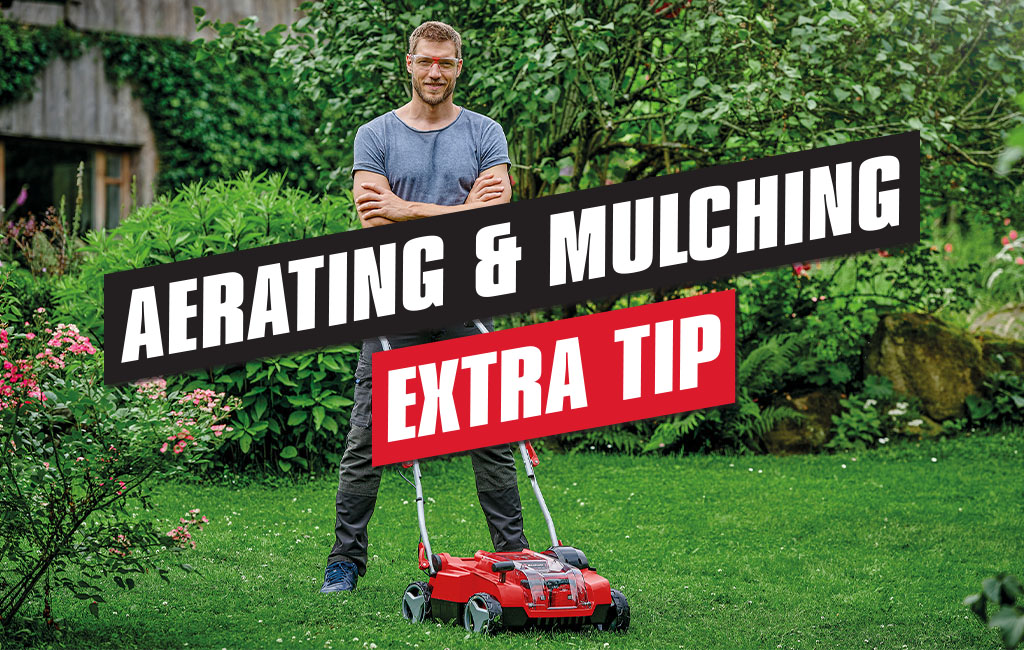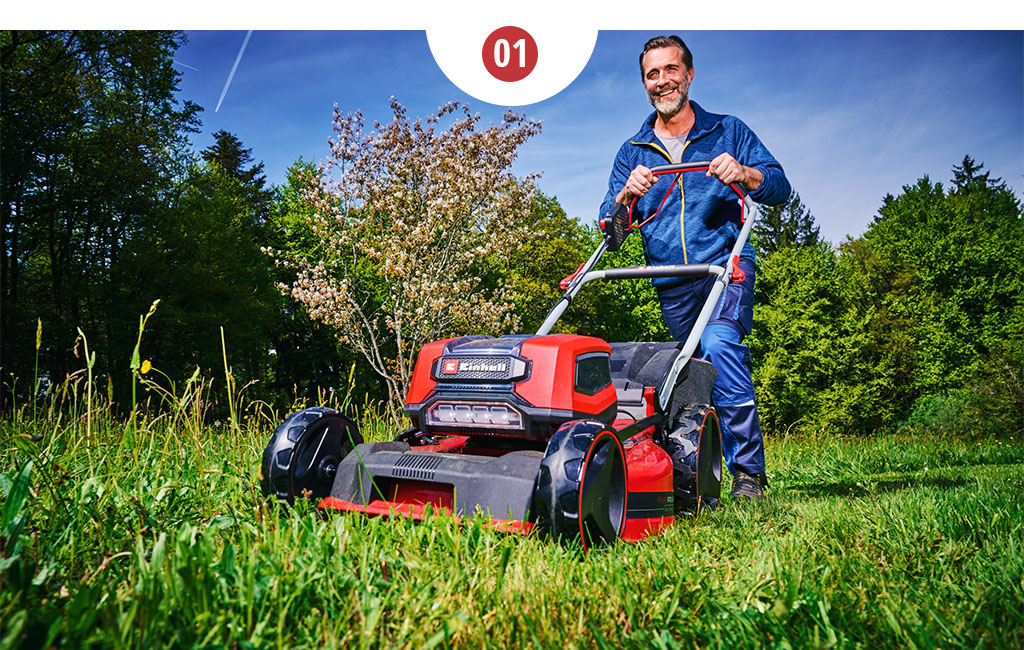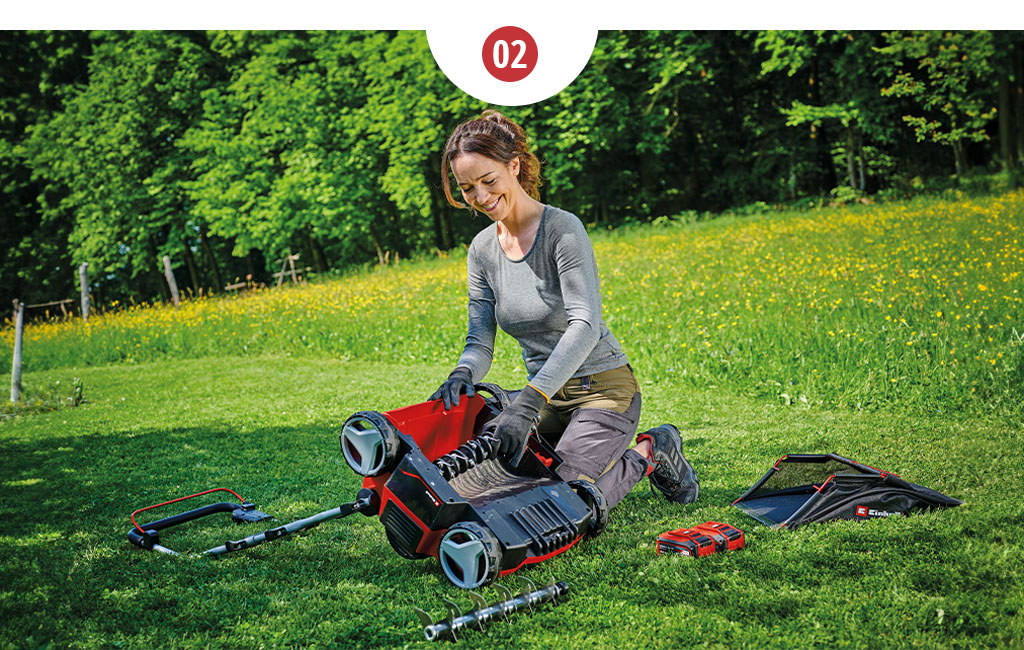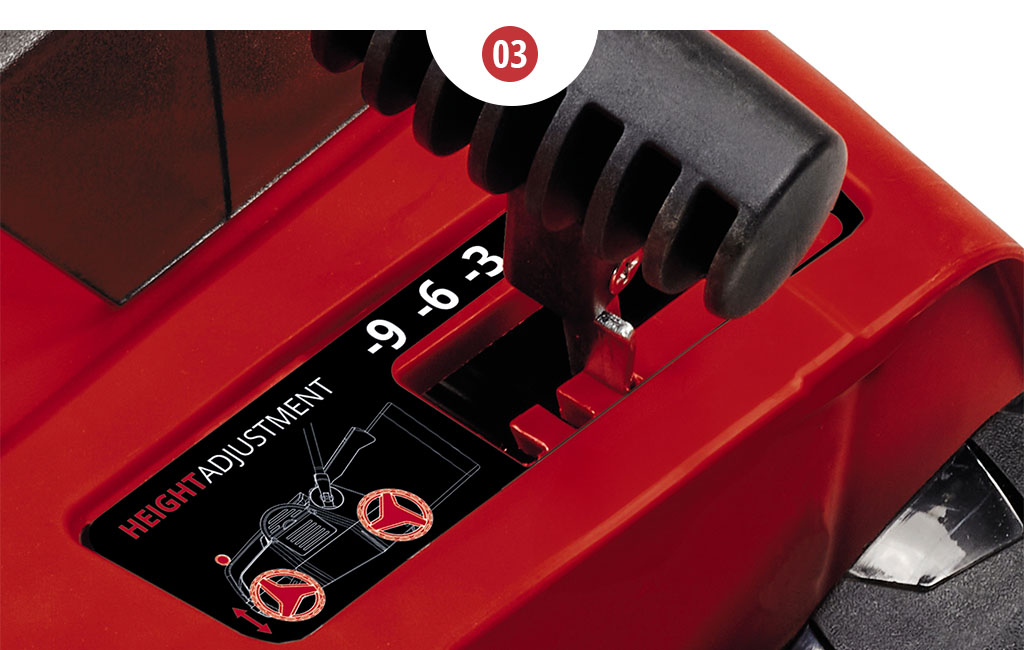Lawn Aeration: The fresh boost for a green, healthy lawn
Lush greenery as far as the eye can see. Well-tended flowerbeds, home-grown vegetables and productive fruit trees. Your own garden can be a true paradise - if you invest enough time and look after it carefully. Regular lawn care to keep the grass in your garden nice and green includes lawn mowing and lawn aeration.
Read our blog post to find out the best way to do this, when you should aerate your lawn and which tools are helpful.

Lawn aeration as an essential part of lawn care
Aerating the lawn: What does it actually mean? During lawn aeration, often also called aerification, the aim is to improve soil ventilation. However, there are differences between terms like aeration, core aerification, and raking, which we'll explain in more detail later in this post. When referring to aeration as part of regular lawn care in the home garden, it usually involves using a lawn aerator. This device, often designed as a combination tool for scarifying and aerating, works its way through the lawn using an aerating roller. This fan roller is equipped with tines, also referred to as needles. Depending on how the working depth of the scarifier-aerator is set, the roller can comb through the lawn, and its tines can penetrate the soil more or less deeply. This process removes debris from the lawn and allows grass roots to receive more light and oxygen.
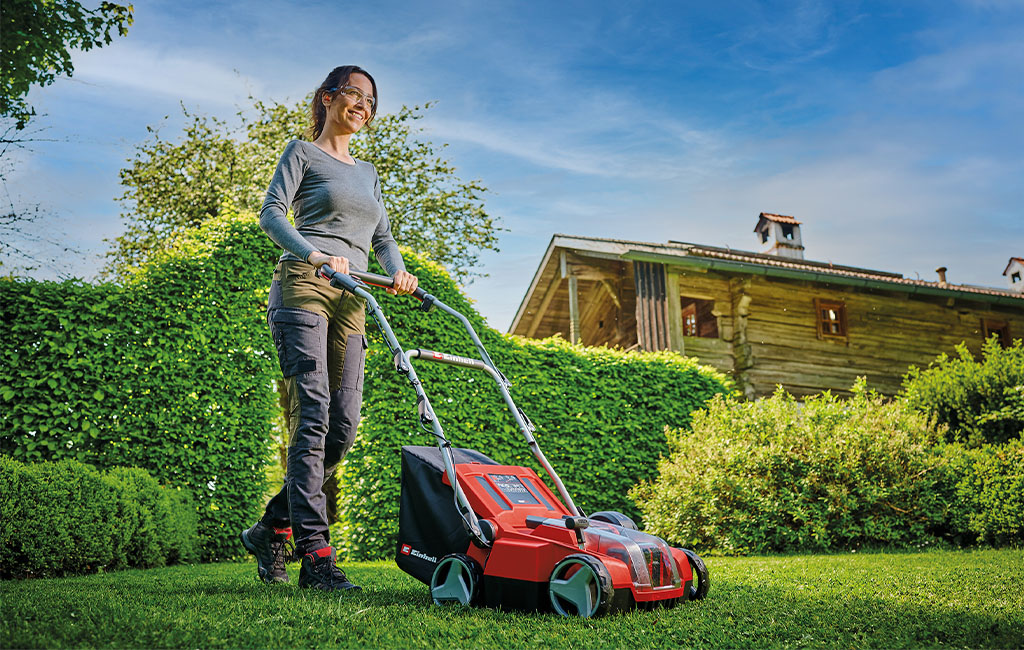
Aeration for the lawn: The advantages at a glance
Regular lawn aeration is a simple yet effective method to provide your lawn with the best possible care and brings important benefits:
-
Better Ventilation: Over time, the soil becomes compacted, making it difficult for grass roots to access water, oxygen, and nutrients. The microorganisms present in the soil then work more slowly and are less effective at breaking down dead grass residues. Aeration loosens the soil by allowing the aerator tines to penetrate the ground. This enables important nutrients to more easily reach the roots.
-
Improved Water Supply: The holes created during aeration allow water to penetrate the soil more effectively and reach the roots of your lawn. This is particularly important after very dry periods when rainwater would simply run off the dry surface.
-
Healthy Lawn Growth: Once microorganisms in the soil become less efficient due to nutrient deficiencies, dead grass residues or mowing remnants are no longer broken down. If these lawn residues accumulate over time, the grass is figuratively deprived of the air it needs to breathe. These conditions are ideal for the formation of thatch, weeds, moss, and other lawn diseases. Aeration breaks up this layer, allowing the lawn to grow healthier and stronger again.
Tip: Aeration and Mulching
You opt for natural lawn care by regularly mulching? Whether with a mulching mower or a robotic mower, the shredded grass residues provide your lawn with the necessary nutrients, replacing traditional fertilizers. Learn more in our blog post on mulching the lawn. However, to ensure that the grass still receives enough "air", the old, un-decomposed mulch should be removed from time to time. Therefore, lawn aeration and scarifying should definitely be part of your lawn care routine!
The differences explained: aerating, raking, core aerating and scarifying lawns
Aeration, Tine Aerating, Scarifying - many terms revolving around a similar topic. But what do these terms actually mean, and are there any differences between them? Yes - and we'll explain what they are in the following!
Aeration vs. Raking
We've already explained what it means to aerate a lawn. In this context, the term "raking" is often used as well. As the name suggests, the lawn is brushed during raking. This means that the aerator roller is set in a way that the aerator tines do not penetrate the soil, but instead comb through the grass to remove old grass residues. In contrast, during aeration, the grass surface is at least scratched by the tines or small holes are pierced into it. For healthy lawn growth, it is therefore recommended to aerate the soil regularly.
Core aerating for the perfect golf course turf
Ventilation, aeration, aerification and core aerating are often used interchangeably, as synonyms. However, always pay attention to the context in which the word is used because the terms actually differ. During core aerating, like aeration, holes are perforated in the turf, but they are significantly deeper and larger than those created by conventional scarifier-aerators. This is for a reason, as the resulting holes can then be filled with sand. Sanding the soil allows excess water to drain optimally in compacted soil. Tools such as aerator forks or coring aerators are used for this purpose. For a typical garden, this approach is usually not necessary unless the soil is very clayey. Core aerating is especially important for heavily used turf areas such as football fields or golf courses. Due to their frequent use, these areas quickly become compacted, causing water to pool on the surface, rendering the golf course unplayable after rain.
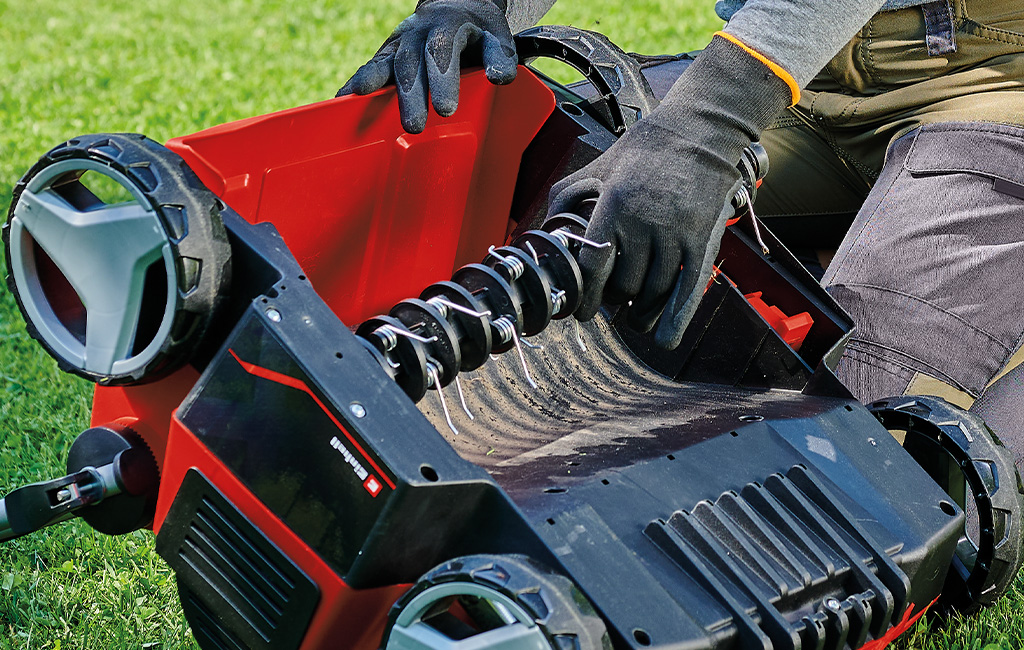

Scarifying or Aeration
Scarifying and aeration are possible with a 2-in-1 device, namely a scarifier-aerator. The function used depends solely on which roller is used and the depth of work set. For scarifying, a blade roller is used, which, depending on the depth setting, cuts the soil to approximately 3, 6, or 9 mm deep and removes the lawn of dead grass residues, thatch, and moss. Working with the blade roller stresses the soil, which is why scarifying is only recommended twice a year. Learn more about scarifying in our blog post.
During aeration, grass residues are also removed, but the tines of the fan roller can, depending on the working depth setting, "comb through" the grass and loosen the soil more or less by piercing small holes into the grass surface. The depth at which the roller works into the soil can be set between 3 mm, 6 mm, and 9 mm with Einhell scarifier-aerators. This rejuvenation treatment for the lawn typically occurs multiple times during the gardening season.
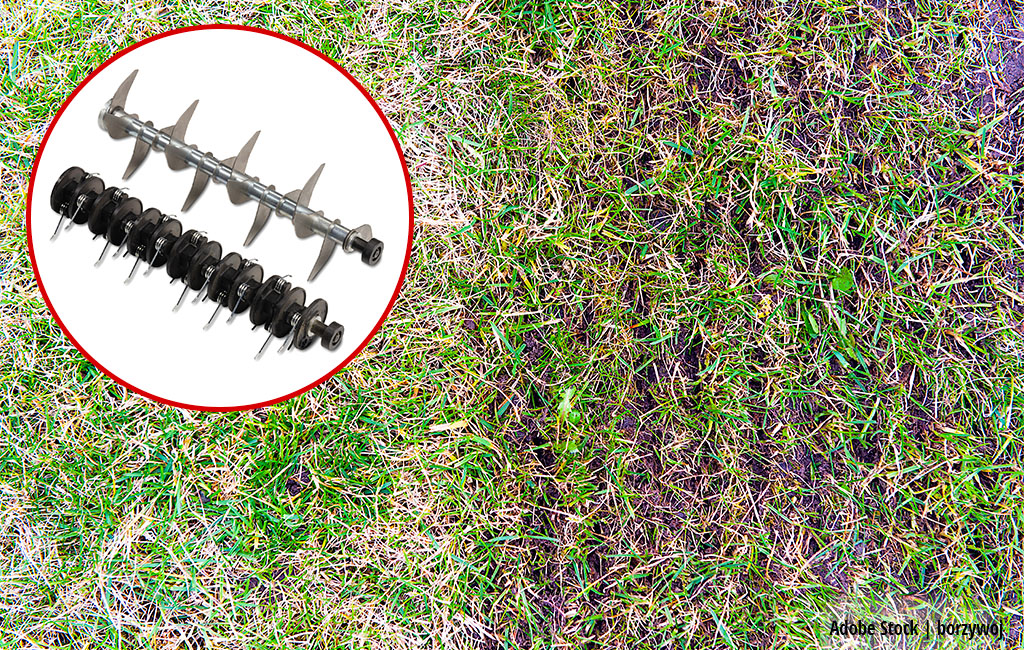
Guide: How, when and with what you can best aerate your lawn
When and how often should you use the lawn aerator?
Aerating should be just as much a part of your lawn care routine as regular mowing and fertilizing. While scarifying the lawn is recommended only twice a year, in spring and autumn, the use of a lawn aerator should occur more frequently throughout the gardening season. The care of your lawn should be based on how much the garden is used and how compacted the soil is. For heavy usage and very compacted soil, aeration should be done more often.
Generally recommended:
-
Period: Spring to Autumn
-
Starting point: After the first lawn mowing
-
Frequency: approximately every 4 - 6 weeks

Working more easily with the right equipment
In our range, you'll find numerous scarifier-aerators that you can use flexibly for aeration or scarifying. Depending on the size of the lawn and other circumstances, you can choose the suitable model. For more information, you can find a comprehensive overview of all Einhell scarifier-aerators here. However, you should definitely have a closer look at the following models:

Cordless Scarifier-Aerator GE-SA 36/35 Li
Scarifying and Aeration – even with grass catcher: The Einhell Cordless Scarifier-Aerator GE-SA 36/35 Li is optimally equipped for this. It comes with a blade and fan roller, which can be changed in a few simple steps and without additional tools. With a 35 cm working width and 36 V battery power, this powerful device is recommended for lawn areas of up to 550 m².
Cordless Scarifier-Aerator GC-SC 18/28 Li
If you have a smaller garden with around 200 m² of lawn area, we can also recommend our Cordless Scarifier-Aerator GC-SC 18/28 Li. This model comes standard with only a blade roller, but you can purchase the aerator roller and grass catcher separately as accessories. By the way, this handy, lightweight scarifier only requires an 18 V Power X-Change battery for cordless flexible use.


Electric Scarifier-Aerator GE-SA 1435/1
Alternatively, instead of opting for the battery-powered tool, you can choose the corded garden tool, such as the Electric Scarifier-Aerator GE-SA 1435/1. If your power cable is long enough, and you have a power outlet available, this scarifier with its 35 cm working width is suitable for areas up to 550 m². It also comes with a tool-free interchangeable blade and aerator roller, as well as a grass catcher.
Aerate the lawn: This is how you proceed
- Mowing the lawn: When the grass is cut short, the lawn can be aerated more easily.
- Prepare the lawn aerator: Check if the tines of the aerator roller are intact and insert the roller into your garden tool.
- Set the working depth: Depending on how much you want to aerate the soil, adjust the working depth accordingly. You can always find instructions for this in the user manual.
- Make even tracks: Work in even, long tracks across your lawn, trying not to leave out any areas. You can do this by overlapping the paths slightly. When turning, lift the lawn aerator to avoid putting too much pressure on the soil at that spot. Avoid staying in one spot for too long, and switch off the lawn aerator during breaks.
- Fertilize and water: To ensure healthy grass growth, make sure to water adequately after mowing and aerating. If it is time to fertilize anyway, it is a good idea to do so after aerating, as the lawn roots can then better absorb the nutrients.





